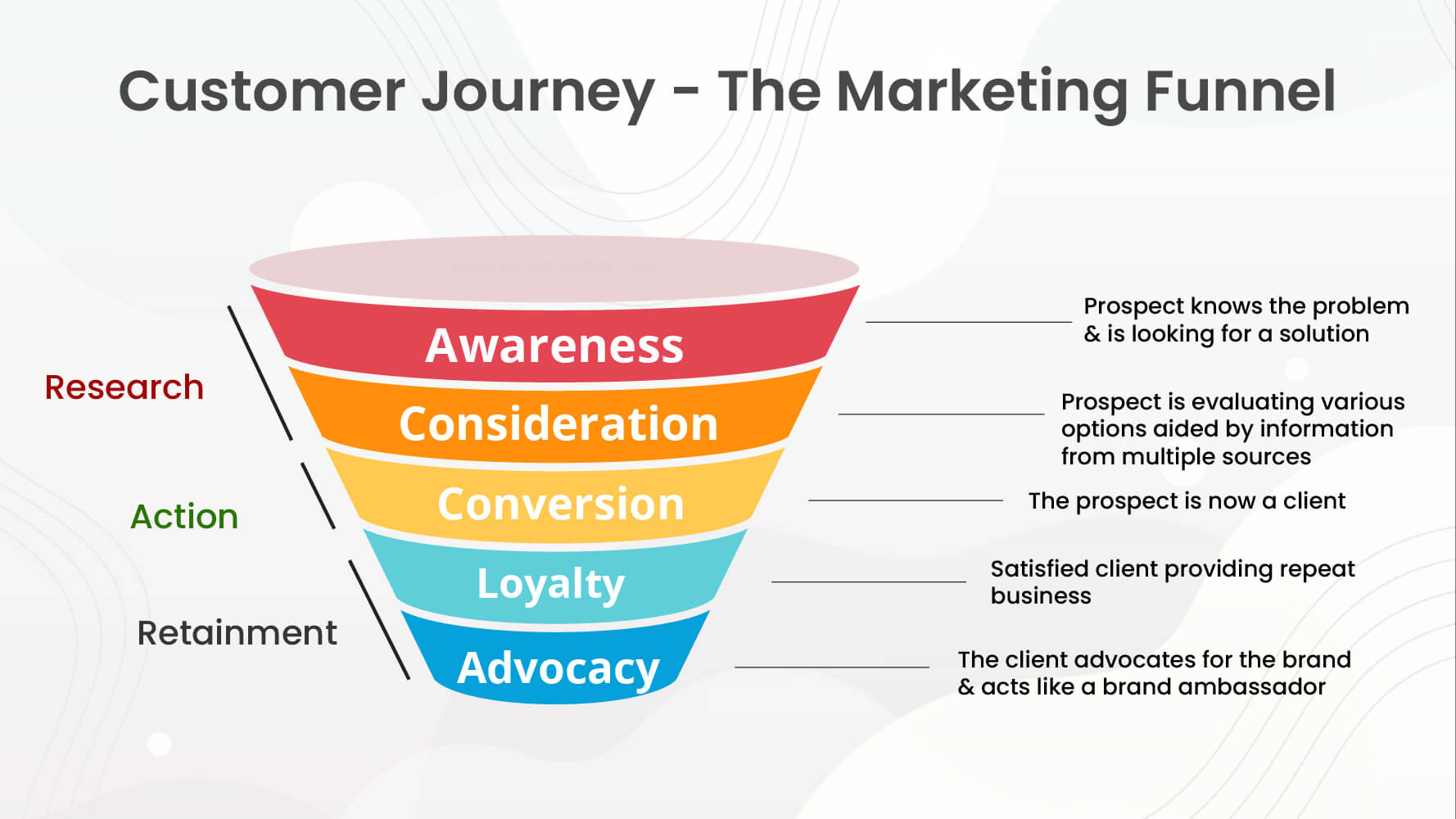Zenith predicted in a report that the average person will spend 100 minutes a day in 2021 watching videos. To help you better understand that number, it means 25 whole days will be spent simply watching videos. Companies need to take this into perspective when developing their video marketing strategy. Fortunately for us, video can be used in many ways in social media marketing. You don’t have to be limited to TV-style ads, or perfectly polished videos.
Follow our steps to creating the perfect video marketing strategy that will give a boost to your business:
Set Goals For Your Video Marketing
Before any social media marketing, you need to set goals. What is the end goal of your video? Where will your video fall in the marketing funnel? An example of a video marketing goal would be creating brand awareness. There are five stages of a marketing funnel and your videos can fall into any of these stages, as long as you are creating your video marketing strategy purposely targeting these stages. When you set goals and identify the funnel stage, you will create a highly effective call to action in your videos.

Decide Your Platform
According to Statista, audiences on Instagram, Facebook, and Snapchat spend around half of their time on the network watching videos in 2019. Choosing any of these three to start your video marketing would be a good step.
Another thing to ensure when choosing the right platform is you understand what each one offers and what video dimensions can be displayed. Older social media channels like Facebook offer various types of videos while newer ones like Snapchat and TikTok rely heavily on one format.
Keep this in mind because you are thinking about repurposing your videos, go for platforms that complement each other. There’s a reason 4X as many customers would rather watch a video about a product than read about it.
Social Media Formats And Features
Various social media platforms keep adding features, making it hard to keep track of the type of video content that you can upload and if you need to do some editing. Have a look below for a quick reference for all the details you need to upload on each network.
- Landscape and portrait feed video
- Live Streaming (Facebook Live)
- Facebook Stories (disappearing content)
- Landscape and portrait feed video
- Live Streaming (Instagram Live)
- Instagram Stories (disappearing content)
- (IGTV) long-form content
- Reels short-form content
- Landscape and portrait feed video
- Livestream
- Stories content (Twitter Fleets)
- Landscape feed video
- Livestream
YouTube
- Landscape video
- Portrait video (may use pillarboxing on some uploads)
- Live Streaming
- Short videos (portrait)
- Portrait feed video
TikTok
- Portrait feed video
Selecting The Type Of Video
Selecting the type of video that works best for your brand is a crucial step in your video marketing strategy. Not every single video is made the same, what is important is that it supports your main goals. Below are the different types of videos and their benefits:
- Educational: Being informative, they create brand awareness for new customers. These types of videos are less casual and take on a more polished tone to establish the brand as an expert. However, if you are creating for current customers, focus the videos on guides and tips for getting the most out of your product.
- Behind-the-scenes: These types of videos give a glimpse into company operations and its employees.
- Interviews: Interviews are a great way of introducing your audience to a new influencer and vice versa with the help of guest speakers. Handing the virtual keys to a guest is both fun and gives authenticity to your brand.
- Entertaining: These could range from jokes, pranks, and even puppies. These exist to solely entertain the public.
According to a study, 48% of consumers want the video to reflect the specific product or service that they own or are interested in. You can go with this first one if you can’t decide which type to choose.
Planning The Content Production
Now, this is the hardest part and best left to the experts. A successful production plan will save you time in the long run. You have options for both content production and post-production. Hiring an agency or production in this step as well as the other will save you a lot of stress. They’ll handle all of the planning and approvals, leaving you with just guidance.
Content production steps include but are not limited to:
- Identifying the required equipment and props.
- Writing a script.
- Editing the script.
- Story boarding the video.
- Planning the shoot for optimal filming. Filming won’t be extended for the most part.
- Finding the right people who are featured.
- Knowing the place(s) you’ll film and taking natural daylight into consideration for timing.
- Knowing where to send the footage to be edited.
- Deciding who will do the approval sign-offs for each step. For example, you want to make sure that the script sounds good and is in line with your voice. This might require two people to review it.
- Checking to see if the music you are using is licensed for you.
Conclusion
And there you have it, a full 5 step guide to a successful video marketing strategy. When done right, you produce high-quality content that is unique to your brand. Video editing and marketing are daunting tasks which is why you have agencies in place, to do the heavy lifting for you!
If you need any further help, feel free to schedule an expert consultation with us.


